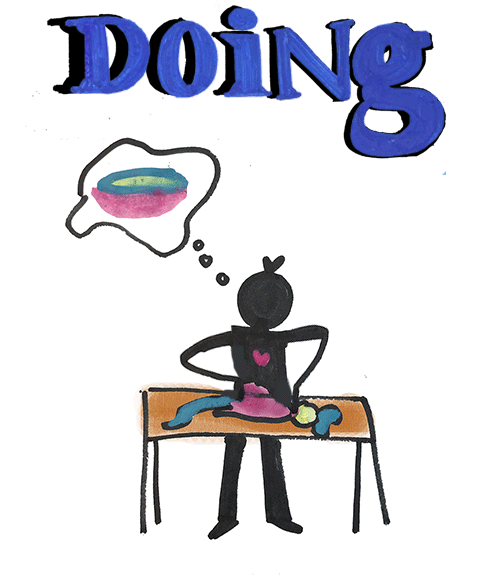Learning By... DOING!
The “Learning By…” series explores some of the foundational ideas of Dr. Seymour Papert. Papert is known as the father of Constructionism, a theory of learning defined by the processes of making, personalizing, sharing, and reflecting. Papert was a mathematician, co-creator of the Logo programming language, co-founder of the Artificial Intelligence Lab at MIT, and a founding faculty member of the MIT Media Lab. He was committed to understanding the various ways that children learn, and to developing methods of instruction which would complement these styles. This series draws on Papert's 8 Big Ideas, as represented in the dissertation of Gary Stager (2007).
Learning by...

Tamera is taking a pottery class to fulfill an art requirement in school. While she isn’t excited about the clay itself, her teacher prompts the class to imagine: if you had all the skill in the world, and could make any object, what might it be? Tamera remembers a beautiful pink, blue and yellow bowl of her mother’s that she accidentally broke. According to Papert, if Tamera begins to play with the clay with this project in mind— one that is rooted in emotion, and something important to Tamera (her relationship to her mother)— she is much more likely to become not only more connected and committed to learning about clay, but also more driven to understand it.
According to Papert, learning by doing allows us to tap into creative resources that we may not have known were there. When we learn by creating someting that is resonant with our interests and passions, we actually learn much better.
In learning by doing then, we could argue that it is passion, which prompts the imagination and solidifies learning.

Reflection: Can you think of a time when you learned something through doing or making? How might that experience have been different if someone had been telling you what to do all along? What was hard, interesting, or useful about the experience?
The “Learning By…” series explores Seymour Papert’s 8 Big Ideas (1999).

